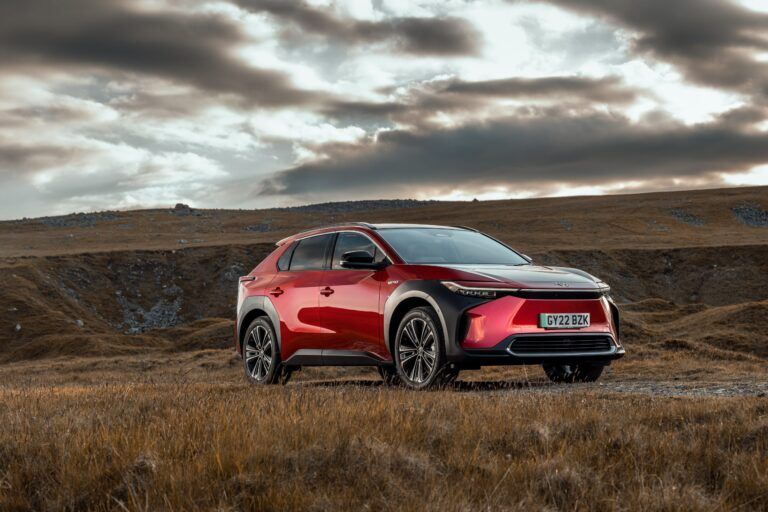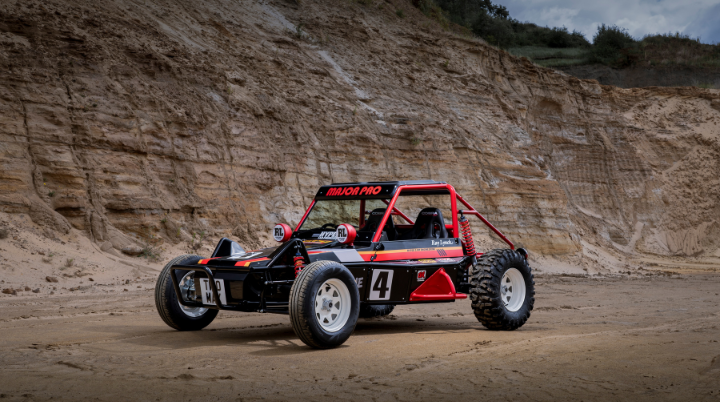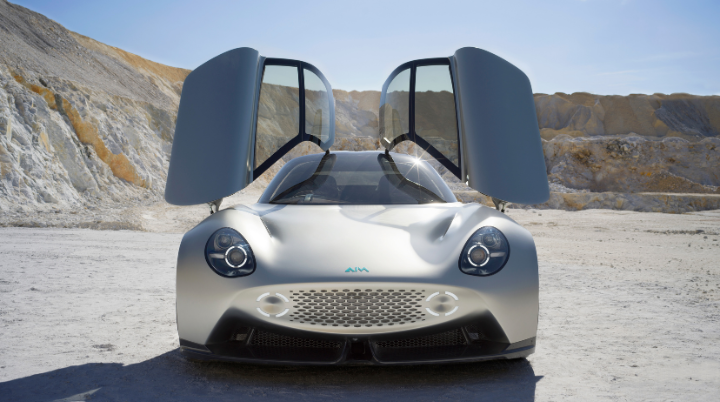The bZ4X is Toyota’s first all-new battery electric vehicle, developed in partnership with Subaru on a new dedicated platform, with the SUV offering a range of up to 317 miles.
The company’s bZ “Beyond Zero” sub-brand of zero emission models brings off-road driving capability to the electric SUV segment.
The bZ4X is not an adaptation of an existing model. Instead, it is wholly original and the first of what will be a series of different bZ vehicles to be constructed on a new Toyota platform dedicated to BEVs. eTNGA integrates the battery unit into the chassis, entirely beneath the vehicle floor. The result is a strong and highly rigid framework and a low center of gravity, defining factors in the bZ4X’s stable and rewarding dynamic performance. The modular design allows it to be easily adapted for use in a wide range of different vehicle types, spanning small to larger segments. The company has worked with Subaru as its development partner for bZ4X, benefiting from the manufacturer’s expertise in areas such as all-wheel drive engineering.
The bZ4X is available in both front and all-wheel drive versions. The FWD model features a 150kW front-mounted eAxle that produces 201bhp and 266Nm maximum torque. The AWD model, uses front and rear 80kW eAxles with a combined output of up to 215bhp and 337Nm of torque. Superior off-road performance is enabled by the AWD system, with XMODE to give secure and stable performance through mud and snow.
The lithium-ion battery unit has a 71.4kWh capacity and comprises 96 cells which are watercooled and constantly monitored individually for any signs of abnormality or degradation. Toyota’s confidence in the quality of the battery is reflected in a guarantee it will retain at least 70 per cent of its capacity up to 10 years or one million kilometers (620,000 miles) driven (subject to an annual Toyota EV health check, terms and conditions apply).
The bZ4X has an official driving range (WLTP standard) of 317 miles for the FWD version and 286 miles for the AWD model. Fast-charging to 80 per cent capacity can be
accomplished in around 30 minutes, in normal temperature conditions. At launch, the vehicle has a 6.6kW on-board charger. Cars produced from towards the end of 2022 will be fitted with an 11kW unit for faster charging performance.





